All About Tomatoes & FODMAPs
Ketchup, tomato sauce, salsa, crushed tomatoes, tomato purée and paste – these are common pantry items and along with fresh tomatoes they can fit into a low FODMAP diet, but we have to read labels, understand the variability of FODMAP content and take heed with serving sizes.
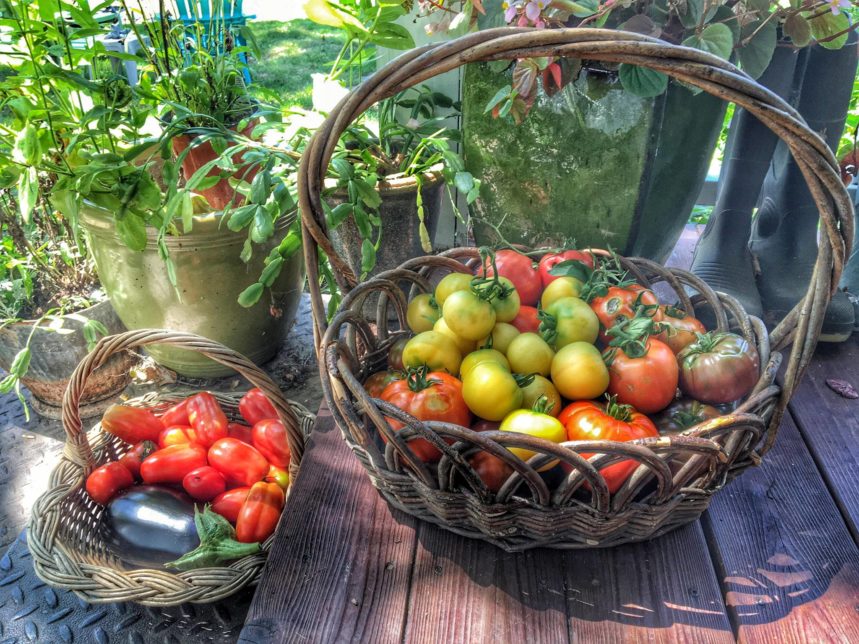
- All About Tomatoes & FODMAPs
- Tomatoes Tested & Retested
- Let’s Talk Fresh Tomatoes
- Monash University & FODMAP Friendly Lab Tested Prepared Tomato Products
- Read Lables; Keep It Simple
- A Fruit By Any Other Name
- Guide to Buying Prepared Tomato Products
- Salsa
- General Tomato Shopping Tips
- The Takeaway
- You can find these and many more low FODMAP products in our shop!
Tomatoes Tested & Retested
Monash University has retested several fresh tomatoes and prepared tomato products over the years. Many of our recipes were developed years ago and might reflect earlier test results. The initial test results and the recent test results are all accurate, even though they are different. You can read more about this in our article, Monash University Testing Explained. The fundamental explanation is that it is very likely that fresh produce will yield different results upon subsequent testing. It is actually to be expected. Please read the article for an in-depth explanation, including quotes from Monash researchers.
FODMAP Friendly has also lab tested tomatoes and tomato products and their labs have produced results that are the same as Monash in some cases, and different in other cases (sometimes higher, sometimes lower). Again, this is not a surprise, nor is it a problem or an indication that any these tests are “wrong”.
Monash University & FODMAP Friendly Are Trusted Sources
The reason we use both Monash University and FODMAP Friendly lab test results in our FODMAP education is that these are the two entities that are lab testing foods and publishing results. Both use quality labs and the results published in their apps are accurate. They publicly report their findings, which are scientifically valid.
We have an article for you that discusses how to look upon lab tests that differ.
There Are 10,000 Tomatoes Varieties
Bear in mind that there are over 10,000 tomato varieties and Monash University and FODMAP Friendly have lab tested just a few – and very likely what you are eating is even different from those. If you are lucky enough to come across super fresh heirloom varieties, by all means try them – but know they were probably not lab tested for FODMAPs.
Bear in mind that there are over 10,000 tomato varieties and Monash University and FODMAP Friendly have lab tested just a few – and very likely what you are eating is even different from those.
Let’s Talk Fresh Tomatoes
Monash has tested cherry tomatoes, common beefsteak tomatoes and Roma plum tomatoes. FODMAP Friendly have lab tested common tomatoes, what they call Nebraska tomatoes (which are yellow), Roma tomatoes, canned tomatoes, cherry tomatoes, sun dried tomatoes and tomato paste.
The low FODMAP serving sizes are as follows (updated April 2024):
- Cherry Tomatoes – Monash University: initial lab tests showed 75 g are low FODMAP; recent tests show 3 cherry tomatoes, or 45 g are low FODMAP. FODMAP Friendly: 75 g is low FODMAP.
- Common Beefsteak Tomato – Monash University: initial lab tests showed No FODMAPs detected; recent tests show ½ tomato, or 65 g is low FODMAP. FODMAP Friendly: 75 g is low FODMAP.
- Nebraska (yellow) Tomato – FODMAP Friendly: 100 g is low FODMAP.
- Roma (plum) Tomato – Monash: initial lab tests showed 75 g are low FODMAP; recent tests showed a low FODMAP amount 48 g, which is about 2/3 of a small Roma plum tomato. FODMAP Friendly: 75 g is low FODMAP; max serve 108 g.
- Tomatoes, Truss/ On The Vine, Raw: ½ tomato, or 69 g is low FODMAP. Note that the term “truss” simply means clusters of tomatoes on the vine. Any kind of tomatoes can be trussed, so this app entry is fairly meaningless unless you go by weight, and even then, we have no idea what variety was lab tested. In U.S. stores trussed tomatoes can range in size from cherry tomato size, to much larger common beefsteak tomato size. Always use the weights in the Monash app for most accurate information.

The tomatoes that Monash and FODMAP Friendly tested were particular tomatoes, at a particular level of ripeness, grown in a particular place, harvested at a particular time, handled and stored in certain ways. As with any agricultural item, lab results could be very different with a different lab sample. The tomatoes that you grow, buy at the farmers market or at the supermarket could very well – and most likely would – show different lab results. In the future, it will be interesting to see how growing conditions, such as hydroponically grown tomatoes, differ (if at all) from field and greenhouse grown tomatoes.
Use The Lab Tested Amounts Prudently
As always, we suggest that you use the lab tested amounts as lines in the sand to begin your exploration of FODMAPs. Your tolerance will be unique and can be assessed through a structured Elimination and Challenge Phase, best conducted along with a Registered Dietitian (RD).
Note that some folks find tomatoes very acidic and their digestion is triggered negatively, but this is not a FODMAP issue. If you have GERD, for instance, tomato products might be difficult for you to digest well.
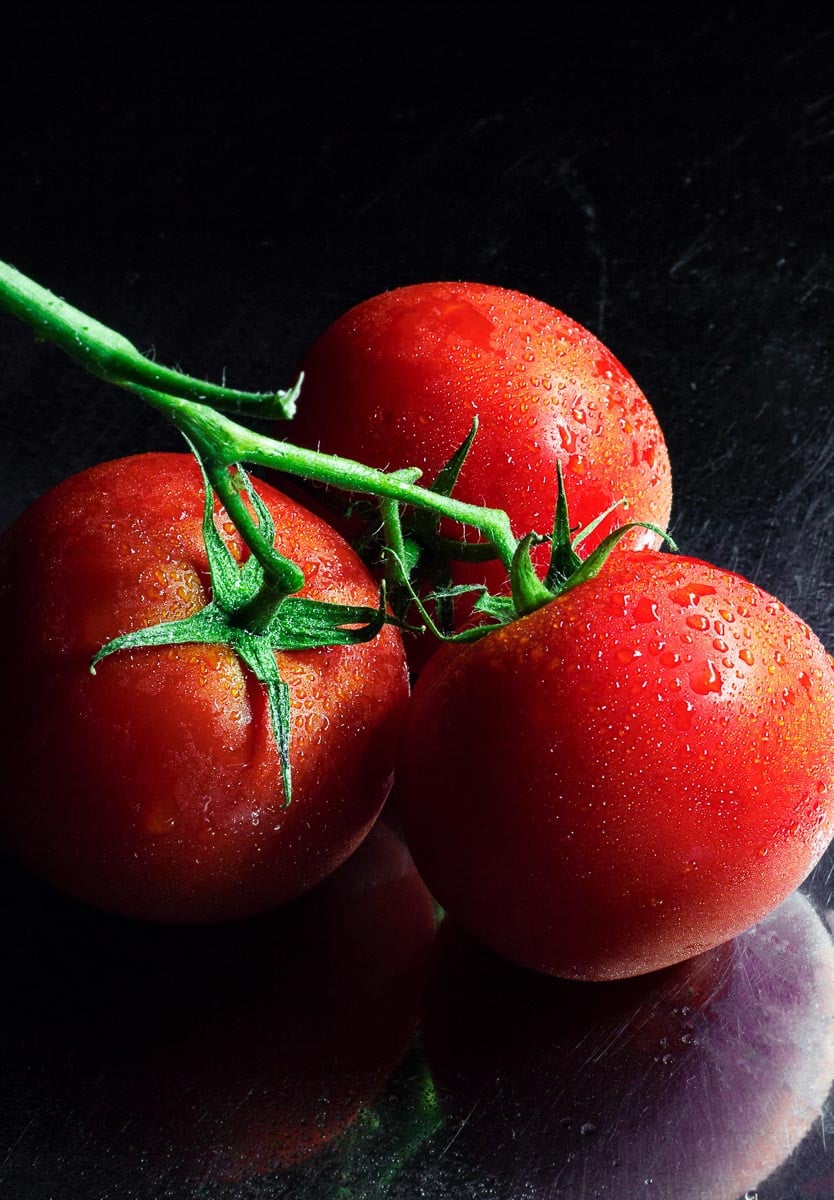
Please take note that the tomatoes that Monash and FODMAP Friendly have tested were ripe tomatoes. As of now they have not tested green, unripe tomatoes, so we do not know the FODMAP level of those. Tomatoes on the same vine, harvested at the same time can even be at different levels of ripeness, as the image shows below.
We have seen very different FODMAP levels in ripe and unripe produce, going both ways, so we cannot extrapolate about green tomatoes. Just look at bananas and guavas. Ripe bananas are higher FODMAP, but ripe guavas are lower. Extrapolations can be very tricky within the low FODMAP diet.
If you have some dead-ripe beefsteak tomatoes on hand, try our classic Low FODMAP Tomatoes Provencal or make a Caprese Salad.
If you have cherry tomatoes at hand, try our BLT Pasta or Sautéed Baby Heirloom Tomatoes.
All of the tomato products that have been lab tested by Monash University and FODMAP Friendly are listed below.
There have been several tomato pasta sauce products lab tested and certified by Monash University, such as FODY Marinara Sauce, Arrabbiata and Tomato and Basil Pasta Sauces.
FODMAP Friendly has lab tested and certified several tomato based products. For pasta sauces they have certified Simply Wize Basilico Pasta Sauce and their Napolitana Pasta Sauce, and also Relish The Barossa Classic Pasta Sauce, to name a few.
All of these sauces have been approved in 125 g amounts, which equals a generous ½ cup. We can therefore surmise that tomato marinara-style sauces will likely be tolerated, if prepared correctly and do not to include high FODMAP ingredients, such as onion and garlic, in large amounts, if at all.
Several RDs have reported that their patients do very well with Prego Sensitive Recipe Tomato Sauce as well as Rao’s Sensitive Formula Marinara Sauce, which can be ordered by the case. It is also lower in sodium than many brands.
You can check out these and other products in our shop.
Below you will see more information on products that Monash University and FODMAP Friendly have tested, such as tomato paste and sun-dried tomatoes, as well as information on products that have not been lab tested, such as passata and fire-roasted tomato products.
You might want to review our articles, What If A Food Hasn’t Been Lab Tested For FODMAPS? and Ask The Right Question: Is It Low FODMAP or Can I Tolerate This?
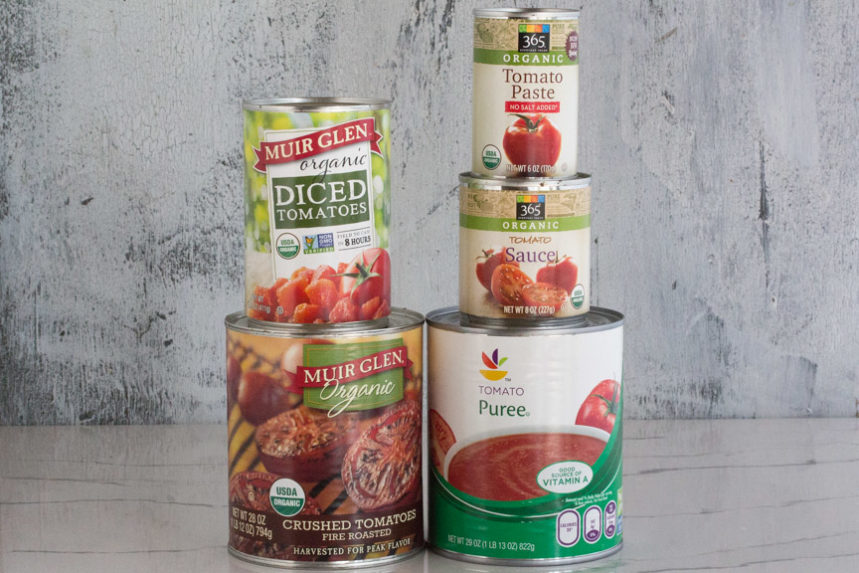
Monash University & FODMAP Friendly Lab Tested Prepared Tomato Products
Here are the prepared tomato products that Monash University has lab tested as of April 2024. We have not included all of the certified brand products (such as those mentioned above). We are focusing on generic products that you would cook with, such as canned tomatoes, tomato paste, etc. Please use weights for most accurate approach. For instance, in the first entry below, we have no idea how the tomatoes were cut or chopped to fit into a “½ cup” measurement.
- Canned Tomatoes, Whole Round In Juice: Monash University: ½ cup or 100 g are low FODMAP. FODMAP Friendly: 76 g is low FODMAP.
- Canned Tomatoes, Whole Plum In Juice: Monash University: ½ cup or 100 g are low FODMAP
- Ketchup: Monash University has lab tested 3 kinds. The Fody brand ketchup is low FODMAP at 1 Australian tablespoon or 17 g. For conventional ketchup, most of which contains onion, 13 g is low FODMAP for both sucrose sweetened and ketchup that contains high fructose corn syrup. We want to point out that this is hardy different from the Fody product. Monash also lists the 13 g amount as “1 sachet”, which is an unstandardized amount (see Tomato Sauce below).
- Tomato Sauce: Caveat – Monash shows a ketchup bottle as the image next to this entry, which is because this is the term used for what some countries call “ketchup”. Monash states that 13 g or a scant tablespoon is allowed, which aligns with the actual Ketchup entry, however, it also lists “2 sachets” as low FODMAP, which is contradictory to the Ketchup entry. Always go by weight.
- Sun-Dried Tomatoes, Semi: Monash University: 3 pieces or 8 g are low FODMAP. FODMAP Friendly: 16 g is low FODMAP.
- Tomato Paste: Monash University: 2 Australian tablespoons or 28 g are low FODMAP. FODMAP Friendly: 28 g is low FODMAP.
- Tomato Based Pasta Sauce Containing Garlic & Onion: Monash University: High FODMAP at ¼ cup or 66 g.
- Vegetable Based Tomato Juice: Monash University: If you are in the U.S., think V-8 juice. 200 ml is low FODMAP.
- Tomato Chutney Containing Garlic & Onion: Monash University: 1 Australian tablespoon or 25 g is low FODMAP.
- And we have an article for you: Canned Tomatoes to the Rescue: 18 Delicious Low FODMAP Recipes for Busy Weeknights.
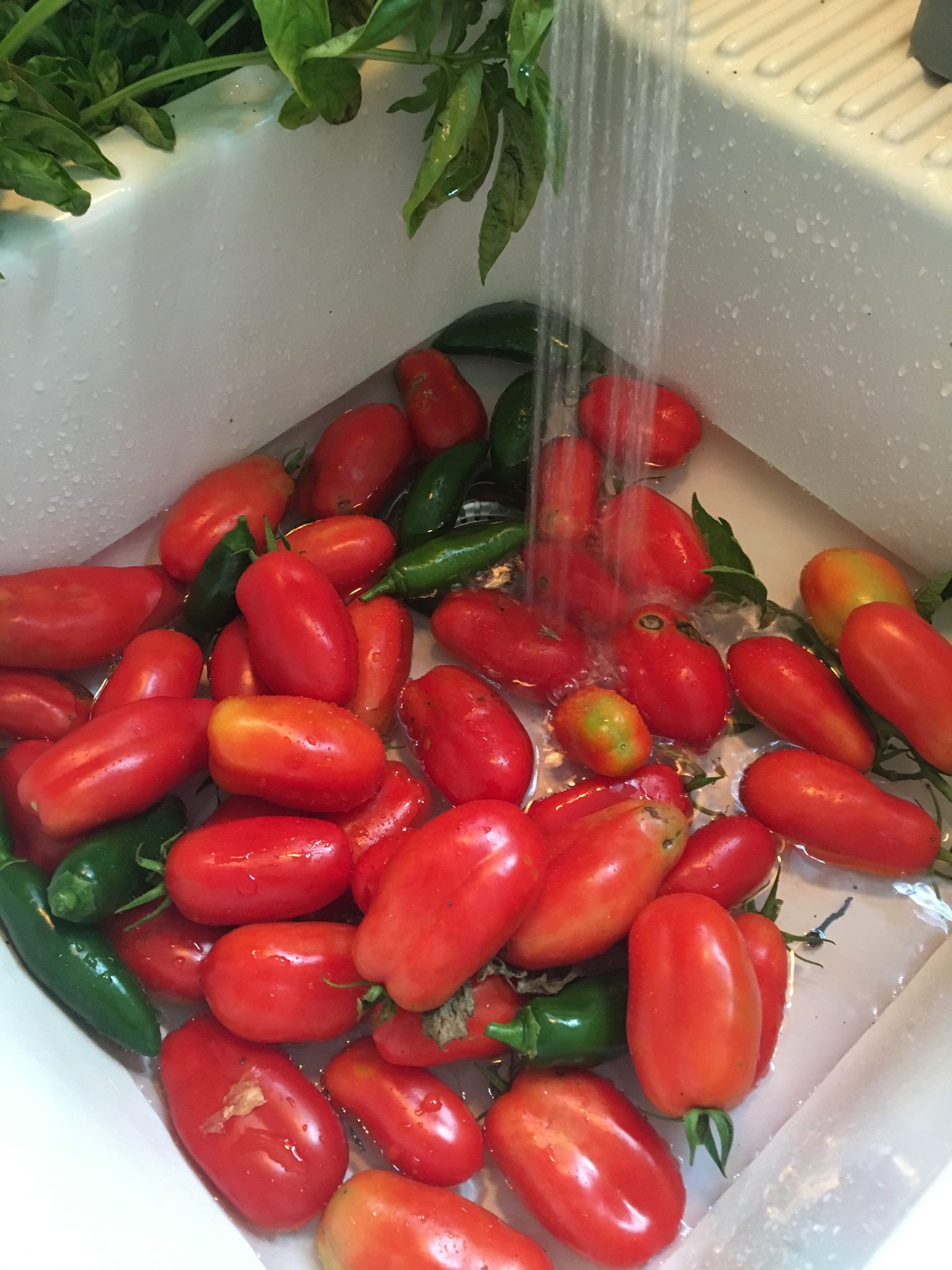
Read Lables; Keep It Simple
Prepared tomato products and brands vary by content; some products might be flavored with basil, jalapeno, garlic or “Italian herbs” (which can contain garlic) and while this can be a time saving measure for some cooks, we suggest that you purchase tomato products with no high FODMAP ingredients for the best low FODMAP cooking approach, unless they are a certified product by either Monash University or FODMAP Friendly.

A Fruit By Any Other Name
While we all treat tomatoes as a vegetable, they are in fact a fruit (even though you will find them listed with the veggies in the Monash University and FODMAP Friendly apps) and many contain a fair amount of fructose, which can be problematic for some of us.
Now, if you are in the Elimination Phase of things, you have to be more conservative. If you have gone through the Challenge Phase and know that fructose and you get a long pretty well, you can eat more liberally – or at the very least, try fresh and prepared items when you are stable.
Guide to Buying Prepared Tomato Products
When it comes to servings sizes, use your Monash University and FODMAP Friendly smartphone apps to provide the most up-to-date serving size amounts. Here are some things to watch out for when buying tomatoes and tomato products.
What About Tomato Product That Are Not Tested?
For our purposes we have made some extrapolations in regards to the “canned tomatoes” that Monash University has tested and have made some educated comments below for tomato sauce, diced tomatoes, crushed tomatoes, tomato purée, etc., which have not been lab tested.
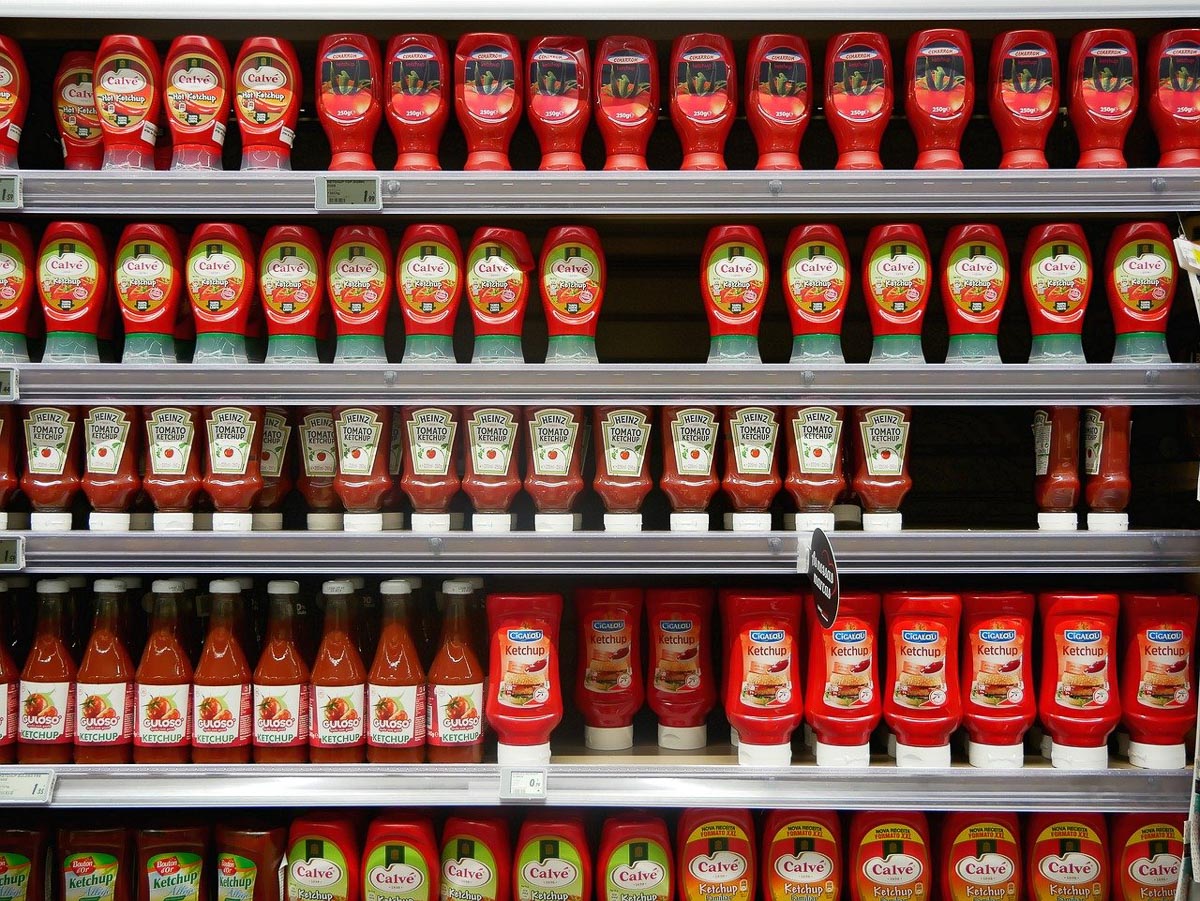
Ketchup
Many contain high fructose corn syrup as well as onion. Some natural and/or organic brands, such as Annie’s, rely on cane sugar for sweetening, but still include onion.
Luckily, Monash University has tested ketchup even with onion, and/or high fructose corn syrup and these versions of the condiment are low FODMAP in small amounts. Please refer to the listing above for more details. There is no need to buy special ketchup.
So dip your fries, just don’t slather it on. And, by the way, if you would rather not have high fructose corn syrup, Simply Heinz is another great choice.
Canned Tomatoes
Within the Monash University smartphone app you can now find two kinds of canned tomatoes: plum tomatoes and round beefsteak tomatoes, both in juice. In prior lab tests, Monash set their ½ cup serving size at 92 g. The ½ cup is now said to be 100g, which just goes to show you that their volume recommendations are not as accurate as their weights. Use the weights.
Check labels. There are sometimes additional ingredients, like salt, calcium chloride and citric acid – even basil leaf – all of which are low FODMAP. Of course if garlic pops up, as it does occasionally, leave that one on the shelf.
Note that Monash tested tomatoes packed in juice and not purée; buy accordingly. FODMAP Friendly does not specify.
Many recipes call for “whole peeled canned tomatoes” and these are the plum, or Roma-style tomatoes mentioned above. Note that we have an extensive discussion on San Marzano plum tomatoes – often considered to be the best – in our recipe for Low FODMAP Pizza Sauce.

Pizza Sauce
Speaking of pizza sauce, sometimes I am an experimenter, and sometimes I am a traditionalist. When it comes to anything called “pizza sauce”, I believe in homemade and it is super easy to make, and low FODMAP. Check out our recipe for Low FODMAP Pizza Sauce.
Tomato Sauce
We were shocked when we looked at labels of tomato sauce; not marinara and spaghetti sauce, but plain old cans of “tomato sauce”. Who knew they often contained garlic and onion?
We like and recommend Nature’s Promise Tomato Sauce, which contains organic tomato purée, sea salt, organic sugar, organic red pepper and naturally derived citric acid or Whole Foods 365 Everyday Value Organic Tomato Sauce, which contains organic tomato purée, sea salt, organic sugar, organic red pepper and citric acid and we always have Pomi Tomato Sauce in the Test Kitchen, which has one ingredient- tomatoes!
Neither Monash University nor FODMAP Friendly have lab tested simple, plain tomatoes sauce, so we treat this as an item that will likely be tolerated in similar serving size amounts by weight to canned tomatoes.
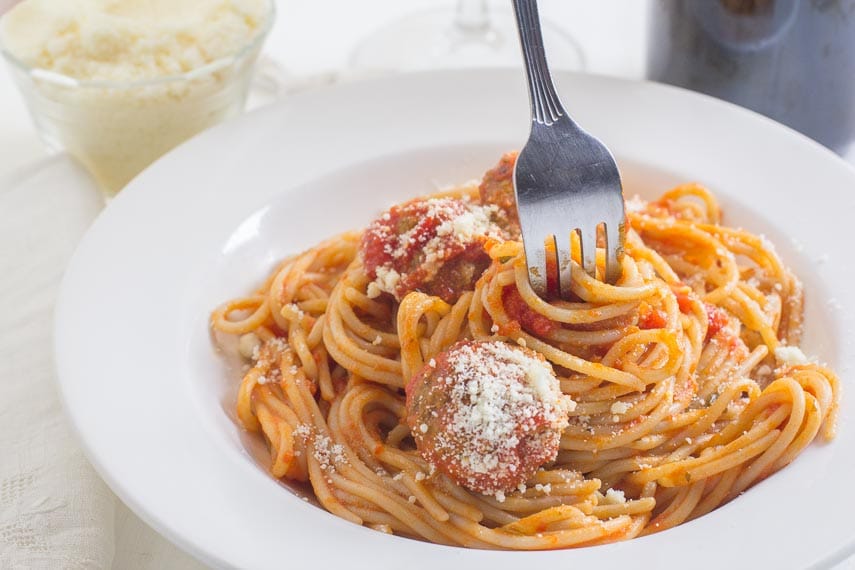
Passata
Outside of the U.S. the term “passata” comes up frequently. It is simply “uncooked” tomato purée that is strained of seeds and skin. “Uncooked” is in quotes because if the product is pasteurized, it is cooked somewhat. Some brands are smoother than others. Pomi, which packages their passata in an aseptic box, is a popular brand; their label also says “strained tomatoes”, and you can look for that terminology elsewhere as well. Many brands have but one ingredient: tomatoes! Other brands will also include salt and/or citric acid, which are not FODMAP issues. Passata often comes in the aforementioned aseptic packaging as well as cans and glass bottles.
Neither Monash University nor FODMAP Friendly have not lab tested “passata” so we treat this as an item that will likely be tolerated in similar serving size amounts by weight to canned tomatoes.
Tomato Purée
Brands like Cento have a very simple label and contain “vine ripened tomatoes” and nothing more. Other brands, such as Muir Glen contain tomato purée (water, organic tomato paste) and citric acid.
Neither Monash University nor FODMAP Friendly have lab tested tomato purée so we treat this as an item that will likely be tolerated in similar serving size amounts by weight to canned tomatoes. Brands without tomato paste will be more similar the canned tomatoes (FODMAP-wise), which are lab tested.
Diced or Petite Diced Tomatoes
Canned diced tomatoes are looked upon similarly to the canned tomatoes that have been lab tested; see that entry above. Go by weight. Labels often look like this: tomatoes, organic tomato juice, sea salt, calcium chloride and citric acid. Steer clear of those with garlic, or those packed in purée.
Crushed/Ground/Peeled Tomatoes
These terms are used interchangeably by various brands, but all refer to a fairly liquid sauce that has some texture. Consider this texture more chunky than tomato sauce but less chunky than diced tomatoes.
Looks for labels with a nice short list of ingredients such as Contadina’s Crushed Tomatoes: tomato purée, crushed unpeeled tomatoes, water, salt, citric acid, calcium chloride.
Neither Monash University nor FODMAP Friendly have lab tested these tomato products so we treat these as an item that will likely be tolerated in similar serving size amounts by weight to canned tomatoes. Brands without tomato paste will be more similar the canned tomatoes (FODMAP-wise), which are lab tested.
Tomato Paste
AmoreTomato Paste has one ingredient on the label – tomatoes! And, it comes in a tube for ease of use. Love it! Look for it, or similar products.
Sundried Tomatoes (Semi sun-dried, per Monash terminology)
Processing of ingredients can change their FODMAP profiles. When tomatoes are dried, the fructose concentrates.
Both Monash University and FODMAP Friendly have lab tested sun-dried tomatoes. Monash lab tests say that 3 pieces (8 g) are within low FODMAP guidelines, whereas FODMAP Friendly says 16 g. This is a perfect example of exploring the Yellow Light items within the Monash app. Sun-dried tomatoes are indeed Yellow Light, and you might therefore pass them by and not realize that you can indeed have a small amount.
Fire Roasted
Muir Glen has both Crushed and Diced Fire Roasted Tomatoes and we love these products. The tomatoes are roasted until the skins are charred and this lends a slightly, but not overpowering, smoky flavor.
Whole Foods also has 365 Everyday Value Organic Diced Fire Roasted Tomatoes, which contain organic unpeeled fire roasted tomatoes, organic tomato juice, sea salt, calcium chloride, citric acid
Our RDs consider fire-roasted to be akin to canned tomatoes. Neither Monash University nor FODMAP Friendly have not lab tested fire-roasted canned tomatoes, so we treat this as an item that will likely be tolerated in similar serving size amounts by weight to canned tomatoes.

Salsa
Tomato based salsa is a hugely popular condiment that typically contains a fair amount of onion, and often garlic as well, however, we know that FODMAPs are very serving size dependent. Worcestershire sauce, for instance, contains garlic and onion and yet has a low FODMAP serving size, per lab testing.
Monash University has lab tested mild conventional salsa that contains garlic and onion and there is a low FODMAP serving size of 2 Australian tablespoons, or 30 g. Note that spicy chiles can be a gut irritant for some.
There are also several lab tested and certified salsas (M = Monash University certified; FF = FODMAP Friendly certified.
- Fody Medium Salsa (M) – 2 tablespoons (30 g) is low FODMAP
- Fody Mild Salsa (M) – 2 tablespoons (30 g) is low FODMAP
- Casa de Sante Salsa (FF) – 2 tablespoons (30 g) is low FODMAP (might have been discontinued)
- Bay’s Kitchen Spicy Tomato Salsa (FF) – 30 g is low FODMAP
So get out your corn chips (50 g is low FODMAP) and dip away! Of course, we have many homemade salsa recipes for you too, all low FODMAP.
Stewed Tomatoes
Most brands that we have investigated contain onion, garlic and/or bell pepper, celery, high fructose corn syrup, herbs and spices among other ingredients. At this point we suggest that you steer clear of this particular item during Elimination.
General Tomato Shopping Tips
There are many fresh and prepared tomato products available that can be incorporated into your low FODMAP diet and these are our best shopping tips.
- When it comes to fresh tomatoes, freshest is best – taste and texture-wise. If you have ever eaten a tomato sun-warmed off the vine, then you know what we are talking about. We bet that you will be obtaining your tomatoes in a variety of ways from a garden, to farmers markets, to supermarkets. Remember that the FODMAP content of the tomatoes (or any fresh produce) that you buy will be different from what Monash University and FODMAP Friendly tested in their labs. This is not a problem! Just use the Monash and FODMAP Friendly smartphone apps as a guide and work with your dietitian to monitor your reactions to foods.
- If organic is important to you, scan the shelves when shopping for fresh or prepared tomato products. Many of the larger companies are now making an organic version of their standard prepared product offerings.
- Also, it is common to be able to find sodium free, or reduced sodium, versions and this might be more desirable for some.
- As always read labels. Many canned tomato products come flavored and would not be low FODMAP such as tomato pastes with roasted garlic, or diced tomatoes that contain onion, garlic and high fructose corn syrup. It is easy to grab the wrong product, as they are typically side-by-side with the items we are looking for – and the labels are often similar.
The Takeaway
Many kinds of tomatoes, fresh and prepared, can be enjoyed while following the low FODMAP diet, even during the Elimination Phase.
As always we suggest that you use your Monash University and FODMAP Friendly smartphone apps to stay up-to-date on lab tested low FODMAP serving sizes of foods, such as fresh tomatoes as well as prepared tomato products.
Do not worry about conflicting lab test results that might appear from time to time, either from Monash itself, or when compared to FODMAP Friendly.
Lab tested low FODMAP serving sizes amounts are based upon Australian government healthy eating guidelines, as well as FODMAP thresholds. (You can see the actual thresholds in our article, Monash University Lab Testing Explained). These serving sizes will not trigger IBS symptoms in most people – but that doesn’t guarantee your digestive response.
As always, the best way to assess your relationship to FODMAPs is to conduct structured Elimination and Challenge Phases, after which you will learn your unique relationship to FODMAPs. Statistically and anecdotally this is best worked through with a registered dietitian, or the equivalent in your country.
You can find these and many more low FODMAP products in our shop!
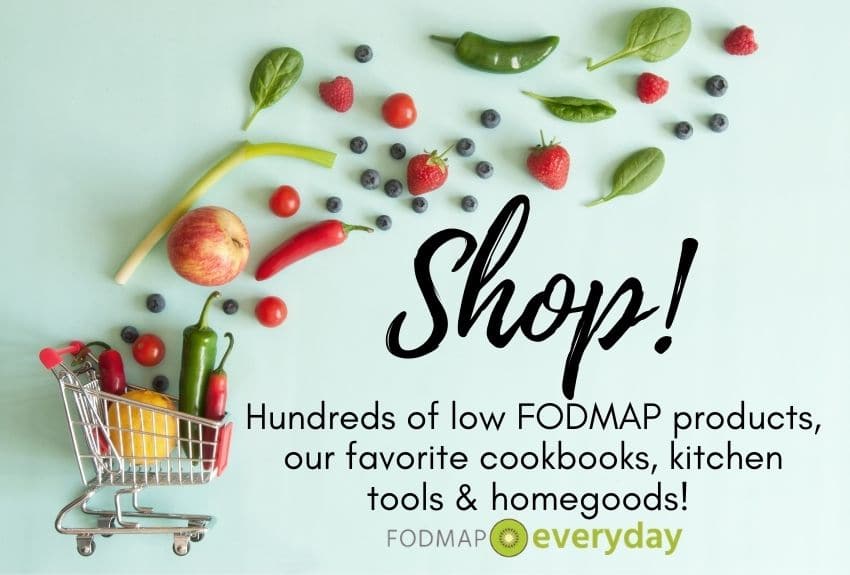
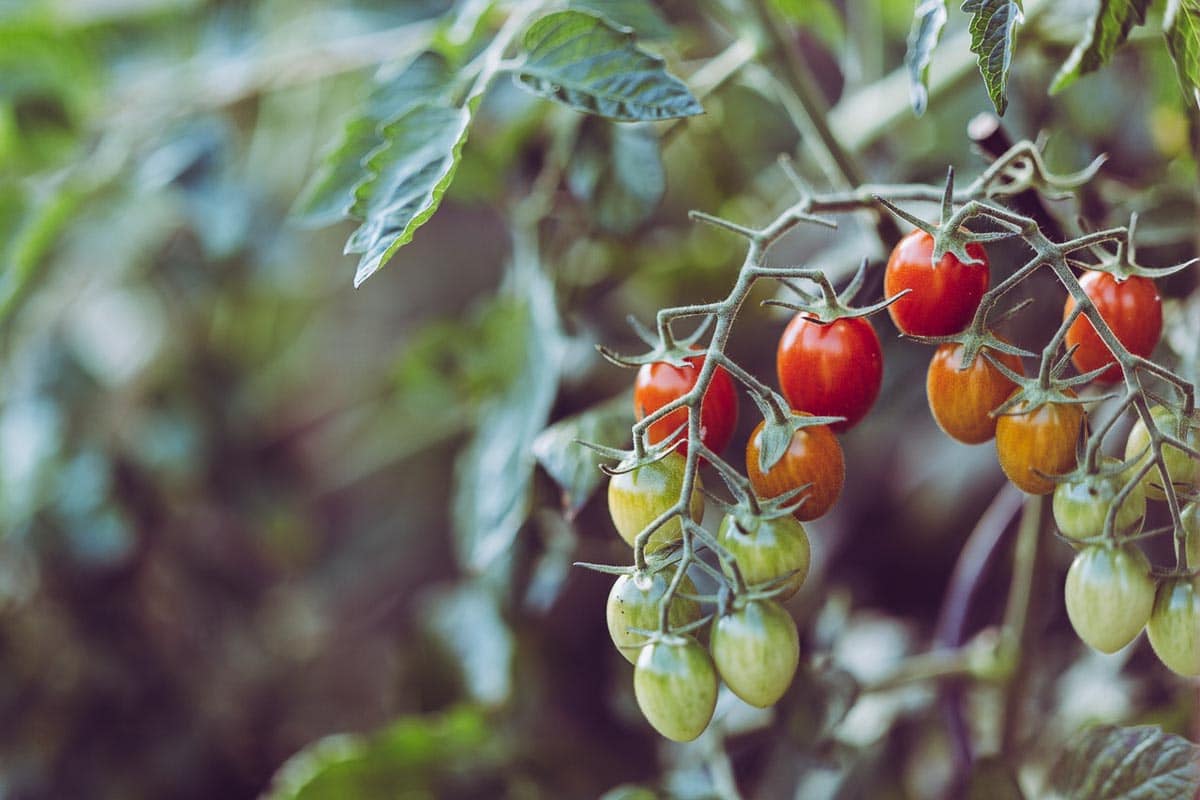
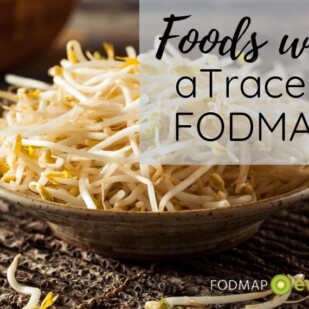






Just in case no one ever told you, in Australia Tomato Sauce is what they call ketchup. Monash is in Australia, ergo your confusion with the picture and portion size for “Tomato Sauce” above.
James, thank you for your comment. My language was not as clear as it could have been! The article is now updated, also to reflect the current Monash FODMAP amounts.
The amount of sugar in tomatoes is affected by many factors including variety, growing conditions, ripeness, etc. Monash studied cherry, slicer, and sauce tomatoes which all had different amounts of fructose. Your advice was best, start with a small amount and see how you react, and remember that these same varieties at a different time or from a different place might be different. This gives us a good idea of an average.
Ander, this is so true – of any fruit and vegetable. The items tested, were the items tested, and of course a different tomato or a different apple, carrot (etc.) grown in different soil or of another variety, would possibly show varied results. Our body’s individual tolerances are what is most important. We use the lab tests as a guide so that we know where to begin or as a reference point. IBS suffers are in so much pain, they want clear and easy answers. This diet takes work in that we must all “work it” for ourselves, which does entail educating ourselves. It sounds like you have the kind of approach that we embrace. Thank you for writing!